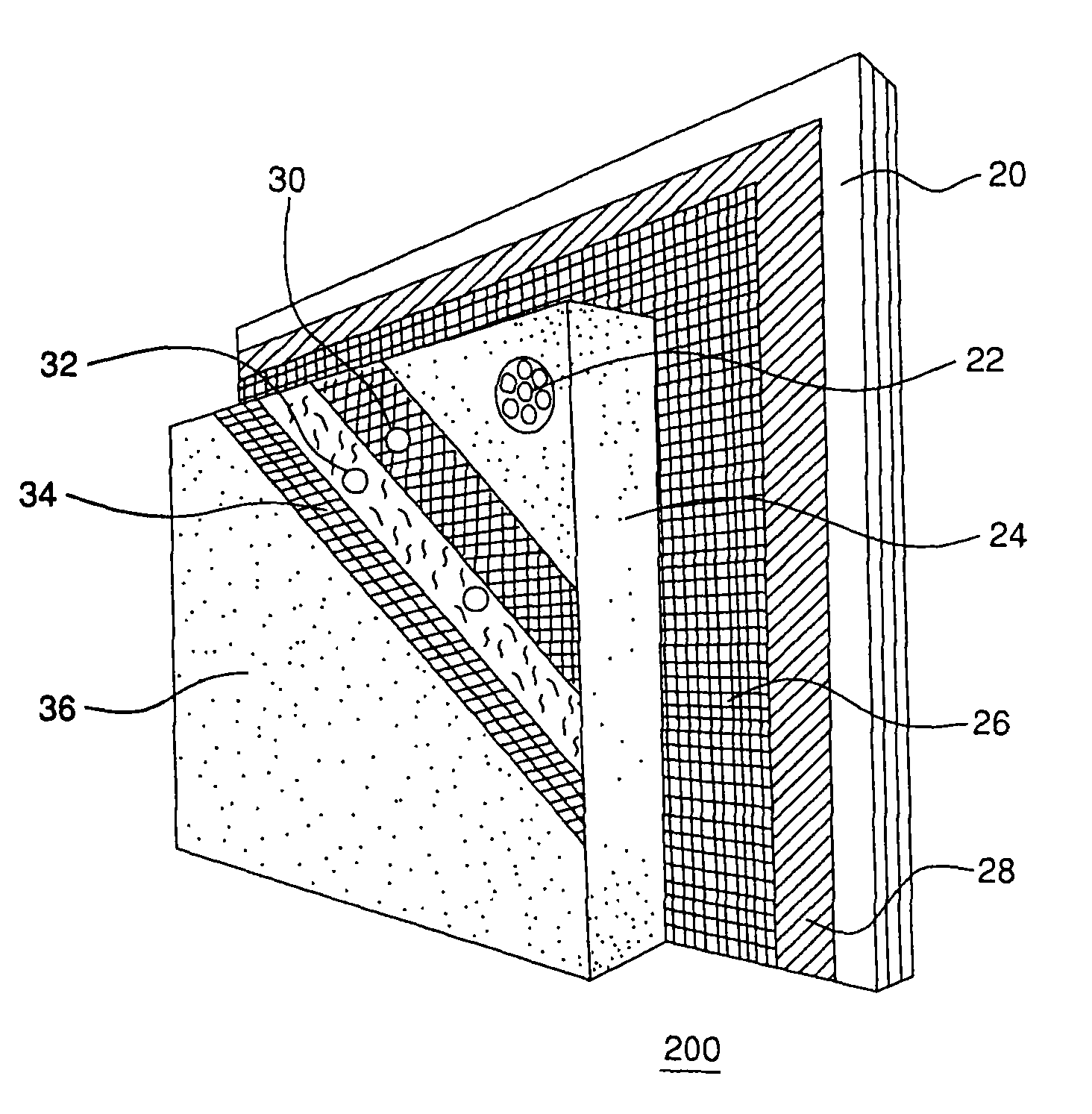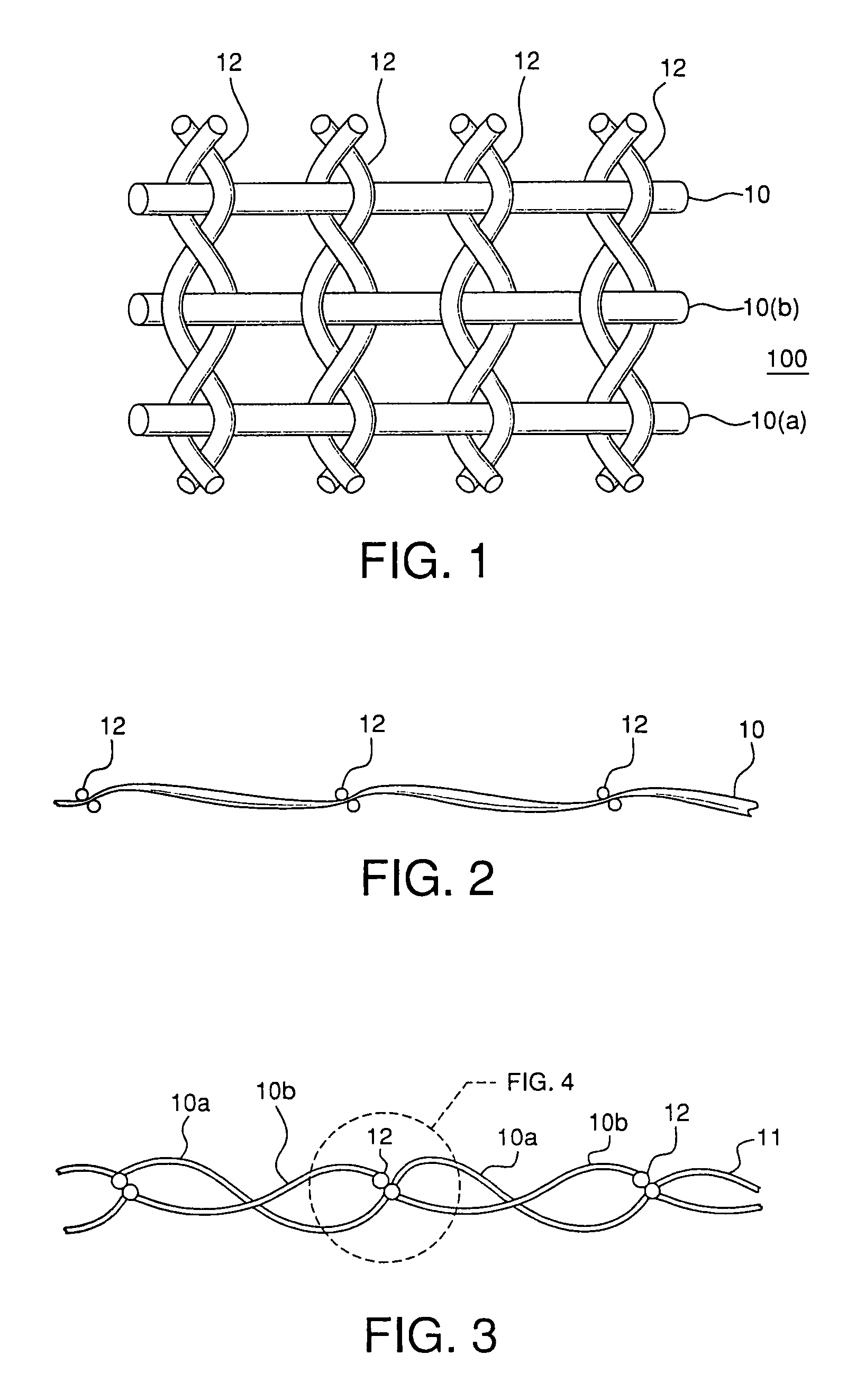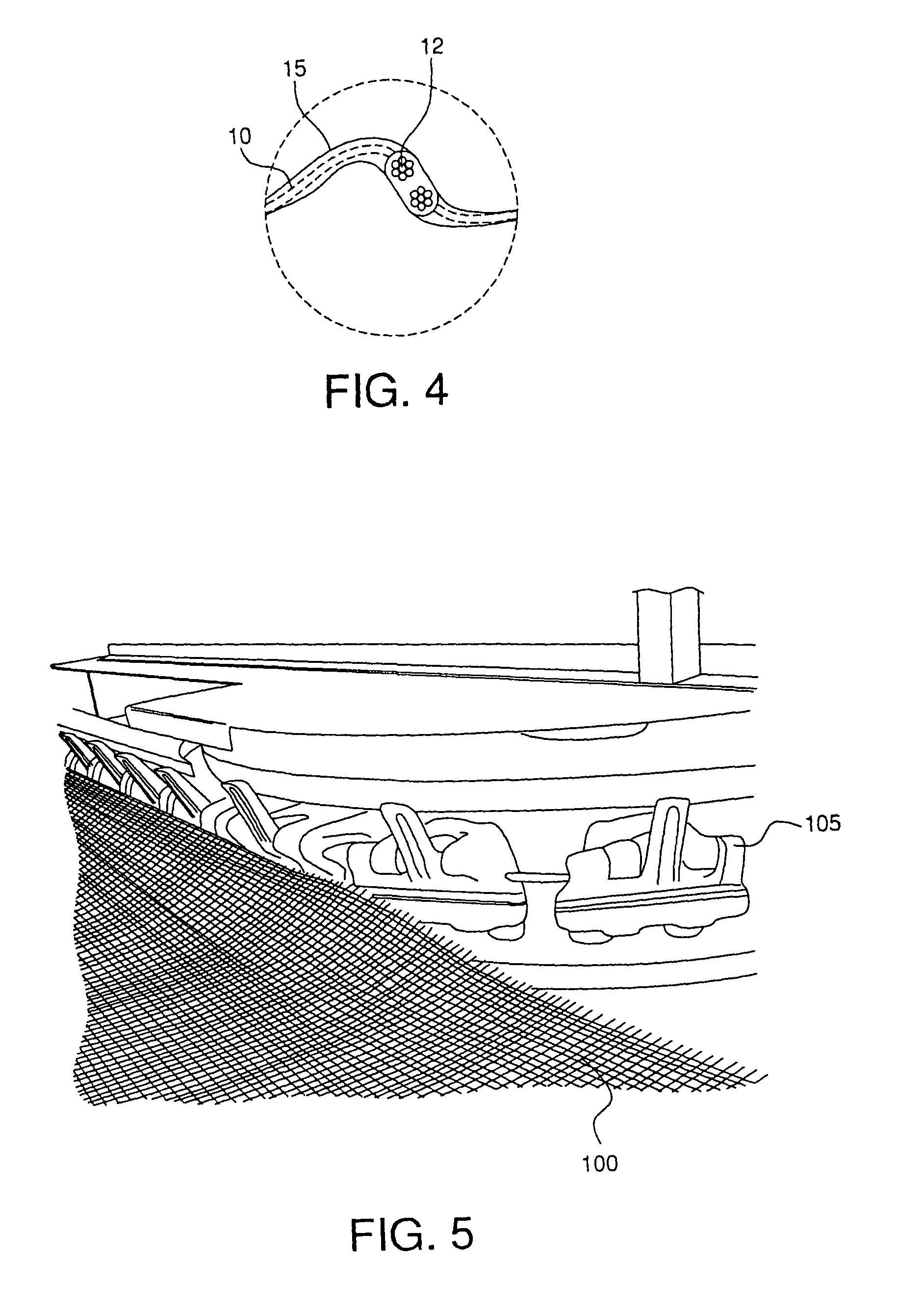Exterior finishing system and building wall containing a corrosion-resistant enhanced thickness fabric and method of constructing same
a technology of exterior finishing and fabric, which is applied in the direction of building repairs, weaving, knotting, etc., can solve the problems of sharp metal wires, salt water and driving rain, and corrosion of steel components, so as to reduce the risk of skin damage to workers, reduce the risk and eliminate the problem of rusting and subsequent discoloration
- Summary
- Abstract
- Description
- Claims
- Application Information
AI Technical Summary
Benefits of technology
Problems solved by technology
Method used
Image
Examples
example a
A trial was undertaken to prove the efficacy of inducing significant thickness increases (in the “Z” plane) into an open, leno weave fabric of unbalanced construction. It was hoped that such a fabric would prove useful in replacing chicken wire or metal lath in exterior stucco building applications.
This trial tested a theory for leno wave products that when the collective weight of warp yarns significantly outweighs that of the weft yarns, a noticeable torque effect is induced in the weft yarns when under tension on the finishing machines. The torque effect causes the weft yarns to deform in a sinusoidal fashion across the width of the web, and thus the fabric thickness (“t”) increases.
Calculations have shown that a fabric based on existing fabric style No. 0061 by Saint-Gobain Technical Fabrics, St. Catharines, Ontario, Canada, will serve as a useful starting point for development in that it has approximately the right construction and cost. The 0061 fabric was modified to unbalanc...
PUM
| Property | Measurement | Unit |
|---|---|---|
| thickness | aaaaa | aaaaa |
| thick | aaaaa | aaaaa |
| corrosion- | aaaaa | aaaaa |
Abstract
Description
Claims
Application Information
 Login to View More
Login to View More - R&D
- Intellectual Property
- Life Sciences
- Materials
- Tech Scout
- Unparalleled Data Quality
- Higher Quality Content
- 60% Fewer Hallucinations
Browse by: Latest US Patents, China's latest patents, Technical Efficacy Thesaurus, Application Domain, Technology Topic, Popular Technical Reports.
© 2025 PatSnap. All rights reserved.Legal|Privacy policy|Modern Slavery Act Transparency Statement|Sitemap|About US| Contact US: help@patsnap.com



